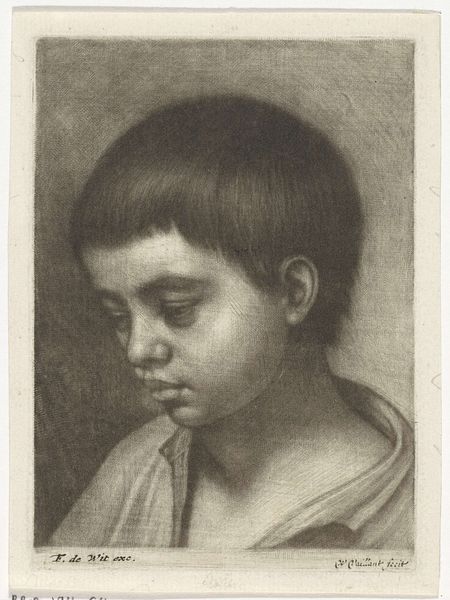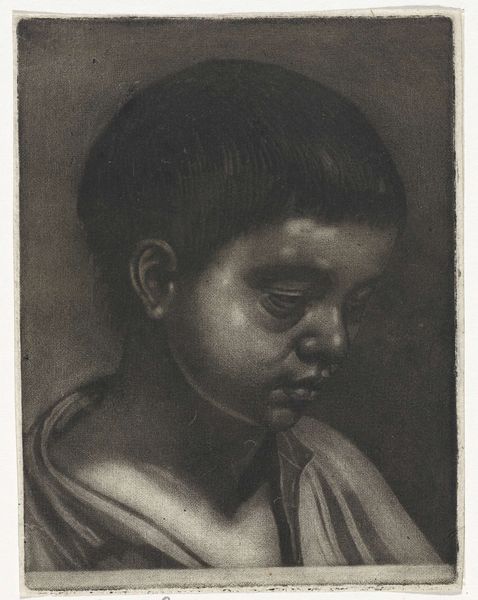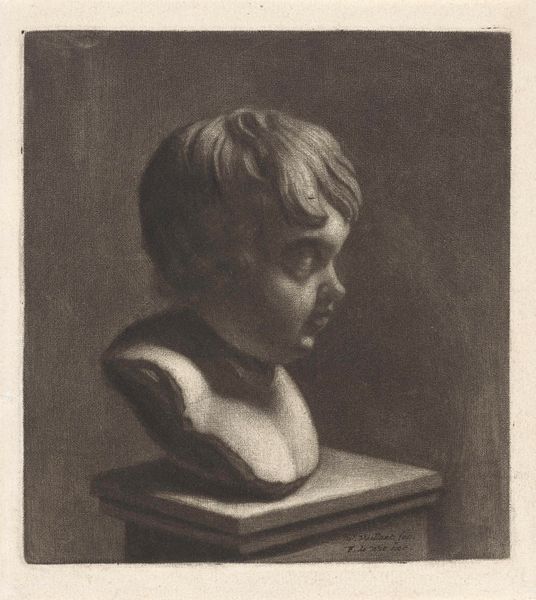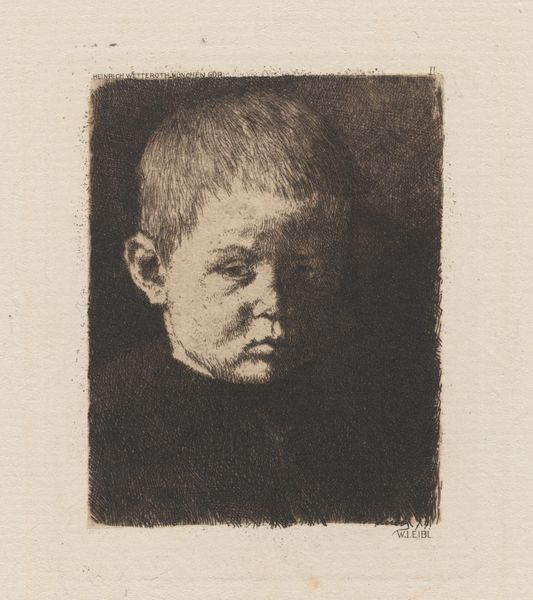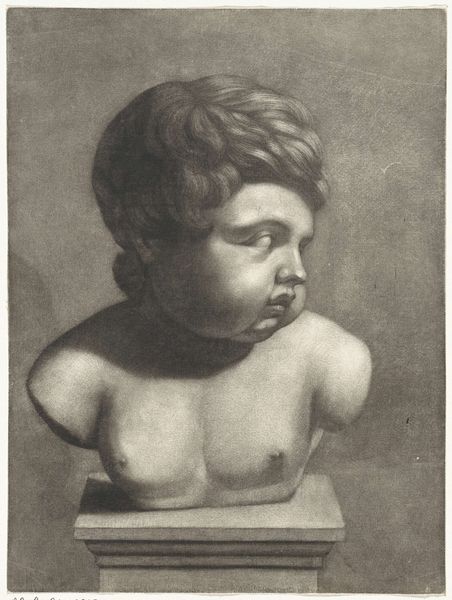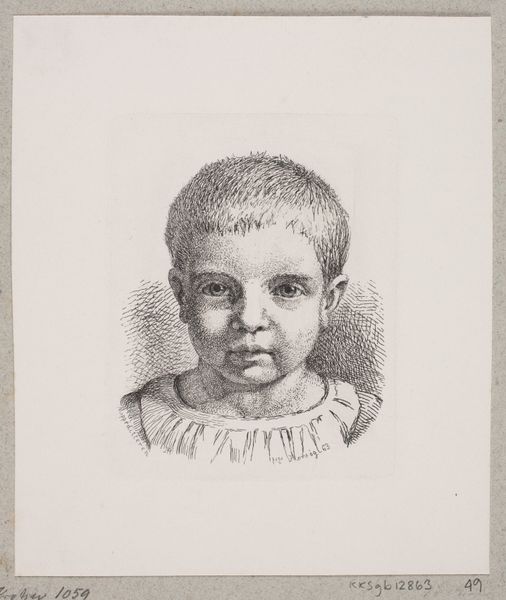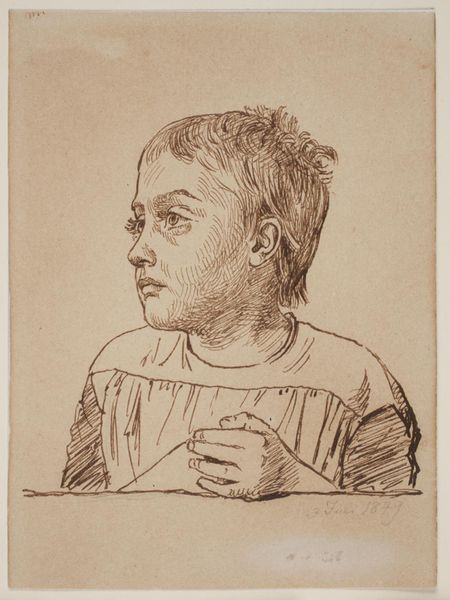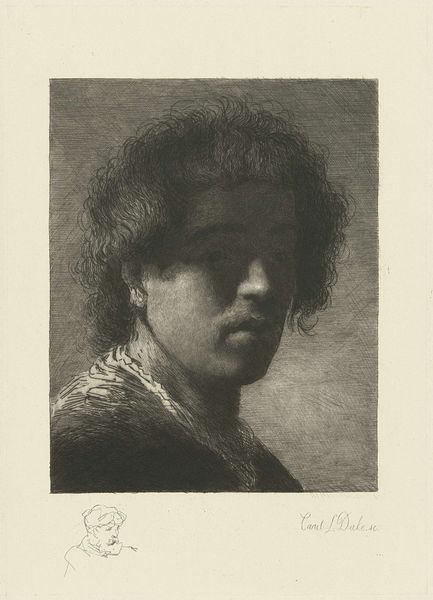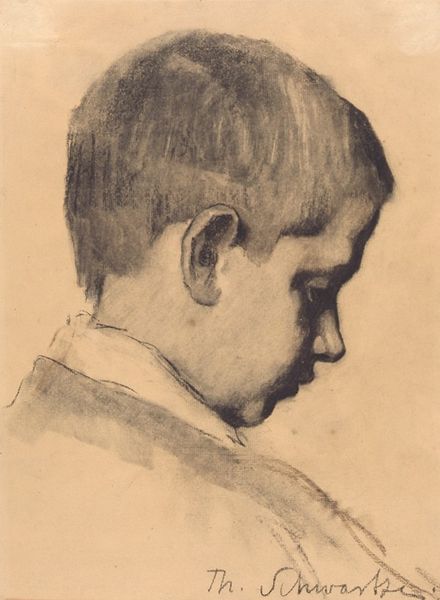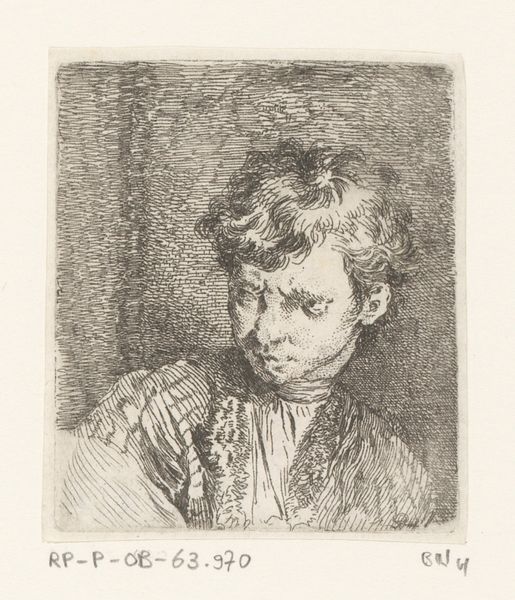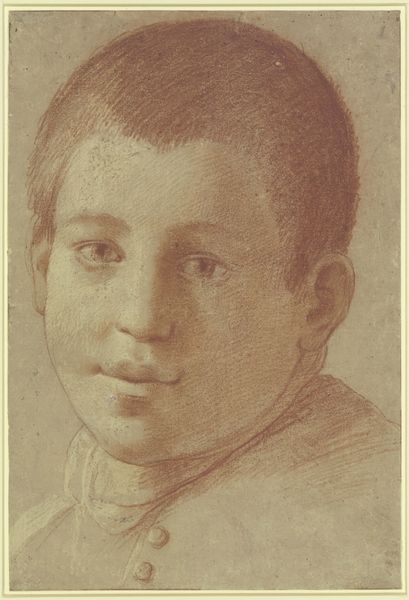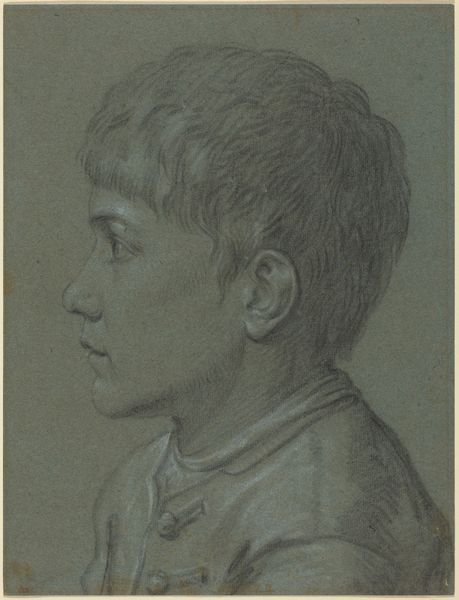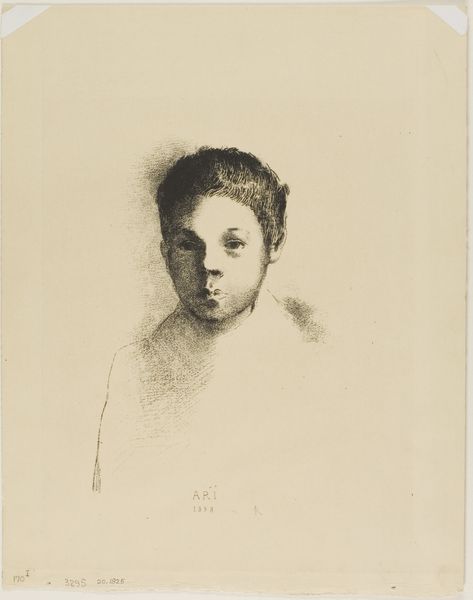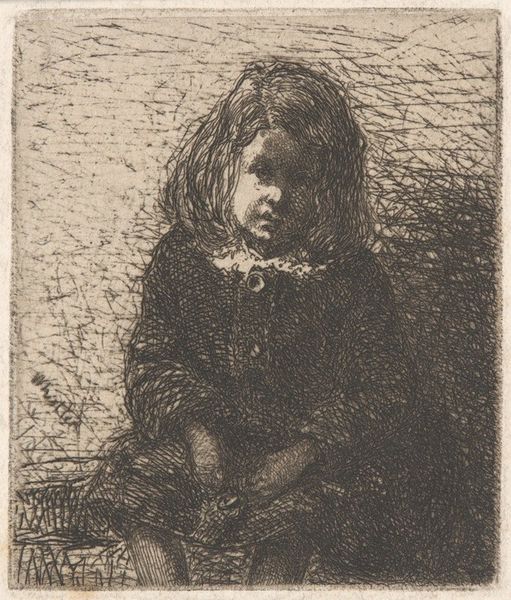
drawing, pencil
#
portrait
#
pencil drawn
#
drawing
#
light pencil work
#
baroque
#
dutch-golden-age
#
pencil sketch
#
caricature
#
pencil drawing
#
pencil
#
portrait drawing
Dimensions: height 116 mm, width 93 mm
Copyright: Rijks Museum: Open Domain
Curator: What a pensive, almost melancholy air about this drawing. It seems to capture a fleeting moment of quiet introspection. Editor: Indeed. We're looking at "Head of a Boy, facing right", crafted by Wallerant Vaillant between 1658 and 1677. It’s a pencil drawing currently residing in the Rijksmuseum. You know, Vaillant was quite the printmaker. Curator: Right. Given Vaillant's broader production of prints, it's tempting to look at this pencil drawing as part of the working process behind printmaking, not as some independent artistic statement. What sort of labor practices or social realities informed the making of this image? Who were his patrons, and how might that affect subject and style? Editor: Interesting lens. For me, the formal qualities jump out immediately. The hatching and stippling create a subtle, almost dreamlike quality to the tonal range of values that make the round face really pop out. His eyes are heavy, downcast, the lips slightly parted, with a powerful shadow cast around the cheek. The soft rendering almost gives it a photographic effect. Curator: Considering Vaillant’s access to materials – the paper, the quality of pencils, and studio space – offers insight into the economic and social position of the artist during the Dutch Golden Age. Where was the graphite sourced from, and what significance does its materiality have? Editor: That's fascinating, though, looking at the rendering itself, I wonder about Vaillant’s engagement with notions of childhood, perhaps mirroring social ideas about innocence or vulnerability during that time? And is it idealized or realistic representation, considering Baroque conventions? Curator: Or the labor. The conditions for apprenticeship, or the access this boy might or might not have had, relative to those from a more comfortable social stratum. This work may provide a window into a system of power, and we could delve into labor histories… Editor: Absolutely valid, though I do think the immediate experience of the artwork revolves around its masterful depiction of quietude. Its graphic eloquence, coupled with its tangible weight. Curator: I suppose that is what remains long after the original conditions subside into silence, though investigating that which subsides does indeed reveal something, doesn’t it? Editor: It certainly does. Thanks to the pencils he used and how he worked the face, he's crafted a really interesting picture!
Comments
No comments
Be the first to comment and join the conversation on the ultimate creative platform.
